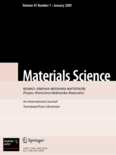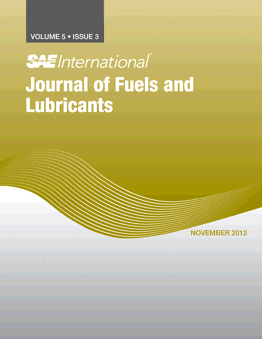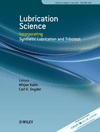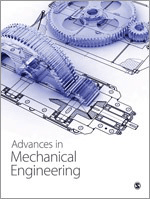
Lubricants
Scope & Guideline
Empowering research in lubrication for diverse industries.
Introduction
Aims and Scopes
- Tribological Characterization:
Research on the friction, wear, and lubrication properties of materials under different conditions, including temperature, load, and environmental factors. - Advanced Lubricant Materials:
Exploration of novel lubricants, including biolubricants and nanolubricants, and their performance enhancements through additives and formulations. - Lubrication Mechanisms and Models:
Development of theoretical and computational models to predict lubrication behavior and performance in various applications, including elastohydrodynamic lubrication. - Sustainable and Eco-Friendly Lubrication:
Studies focusing on the environmental impact of lubricants, promoting the use of biodegradable and sustainable materials in lubrication. - Lubrication in Engineering Applications:
Application-driven research addressing lubrication issues in fields such as automotive, aerospace, and manufacturing, with a focus on real-world engineering challenges.
Trending and Emerging
- Nanotechnology in Lubricants:
The incorporation of nanomaterials as additives in lubricants is emerging as a prominent area of research, enhancing performance, reducing friction, and improving wear resistance. - Biolubricants and Sustainable Solutions:
Increased focus on environmentally friendly and biodegradable lubricants is evident, with studies exploring plant-based oils and their performance in industrial applications. - Machine Learning and AI in Tribology:
The application of machine learning techniques to predict lubrication performance and diagnose lubrication-related issues is gaining momentum, showcasing the integration of advanced technologies in tribology. - Advanced Characterization Techniques:
Emerging methodologies for the characterization of lubricants and tribological systems using advanced imaging and analytical techniques, such as molecular dynamics simulations and 3D printing. - Tribocorrosion and Surface Engineering:
Research into the interactions between lubrication, corrosion, and material surface treatments is becoming increasingly relevant, particularly in demanding environments.
Declining or Waning
- Traditional Lubrication Techniques:
Research on conventional lubricants and methods is becoming less prevalent as the field shifts towards innovative materials and eco-friendly solutions. - Static Lubrication Studies:
Investigations purely focused on static lubrication phenomena are dwindling, as more emphasis is placed on dynamic and operational conditions. - Generalized Theoretical Models:
The reliance on broad theoretical models without consideration for specific applications or materials is decreasing, giving way to more tailored and experimental approaches.
Similar Journals

MATERIALS SCIENCE
Fostering Collaboration in the World of Materials.MATERIALS SCIENCE, a prominent journal published by SPRINGER, serves as a vital resource for researchers, professionals, and students in the fields of materials science, mechanical engineering, and condensed matter physics. With its ISSN 1068-820X and E-ISSN 1573-885X, this journal has been dedicated to sharing innovative research since its inception in 1993, and it continues to publish groundbreaking findings through 2024. Although it operates as a traditional subscription-based journal, its ranking in the Q3 quartile across multiple scientific categories, including Condensed Matter Physics, Materials Science, Mechanical Engineering, and Mechanics of Materials, signifies its relevance and impact in the academic community. Notably, its Scopus classifications reveal a competitive standing among its peers, ranking within the 25th to 33rd percentiles across various engineering and physics disciplines. The journal remains a key platform for disseminating valuable insights, fostering collaboration, and advancing the understanding of materials science.

SURFACE SCIENCE
Unveiling the Secrets of Surfaces and InterfacesSURFACE SCIENCE is a prominent journal in the fields of Condensed Matter Physics, Materials Chemistry, and Surface Engineering, published by Elsevier in the Netherlands. With an ISSN of 0039-6028 and an E-ISSN of 1879-2758, the journal encompasses a wide range of research related to the physical and chemical properties of surfaces and interfaces, serving as a valuable resource for researchers, professionals, and students alike. As of 2023, it holds a Q3 ranking across multiple categories, indicating its significant contribution to its respective fields, despite room for improvement in its overall impact within the scientific community. Researchers will find that SURFACE SCIENCE provides a platform for innovative and interdisciplinary studies, making it essential for those looking to stay updated on emerging trends and technologies in surface science. While the journal is currently not open access, its reputation and robust indexing reinforce its importance in advancing scientific knowledge and fostering new discoveries.

SAE International Journal of Fuels and Lubricants
Pioneering Research for a Greener TomorrowWelcome to the SAE International Journal of Fuels and Lubricants, a leading peer-reviewed publication dedicated to advancing knowledge in the crucial fields of fuel technology and lubrication science. Published by SAE International, this journal serves as a vital resource for researchers, industry professionals, and students engaged in the study and application of innovative fuels and lubricants. With an impact factor indicative of its importance, the journal is ranked in the Q3 category for both Fuel Technology and Pollution, highlighting its critical role in addressing global energy and environmental challenges. Covering a range of topics from fundamental research to practical applications, the journal not only contributes to academic discourse but also serves to inform industry practices. Our publication spans the converged years from 2009 to 2024, reflecting a commitment to continuous scholarly contribution. While currently operating under a traditional access model, the journal aims to foster an inclusive environment for discourse in the rapidly evolving fields of energy and environmental science.

Lubrication Science
Transforming insights into practical lubrication applications.Lubrication Science is a premier journal dedicated to advancing the field of tribology, focusing on the study and application of lubricants, lubrication methods, and their impacts in materials science. Published by WILEY, this journal serves as a critical platform for researchers and industry professionals alike, providing innovative insights and findings since its inception in 1988. With an ISSN of 0954-0075 and E-ISSN 1557-6833, the journal has established a commendable reputation in the academic community, holding a Q2 ranking in Materials Chemistry and a Q3 ranking in Surfaces, Coatings and Films as of 2023. Despite its recent emergence as a competitive publication, evidenced by its 47th percentile rankings in both subfields, Lubrication Science continuously seeks to bridge gaps in knowledge and foster collaboration among researchers. Its commitment to quality research is reflected in its detailed reviews and timely publication of original research articles. Although not an open-access journal, it remains an essential resource for anyone looking to keep abreast of the latest advancements and applications in lubrication technology, making significant contributions to sustainability and innovation in materials science.

TRIBOLOGY LETTERS
Exploring the Friction of Ideas in Engineering ExcellenceTRIBOLOGY LETTERS is a distinguished peer-reviewed academic journal published by SPRINGER/PLENUM PUBLISHERS, focusing on advancements in the field of tribology and its applications across various engineering domains. With an ISSN of 1023-8883 and an E-ISSN of 1573-2711, this journal serves as a crucial platform for disseminating cutting-edge research and technological innovations, operating from its esteemed headquarters in the United States. The journal is categorized in the Q2 quartile across multiple domains including Mechanical Engineering, Mechanics of Materials, Surfaces and Interfaces, and Surfaces, Coatings and Films, showcasing its significant impact within the respective fields. With Scopus rankings placing it in the top 25% for Engineering and top 20% for Physics and Astronomy related categories, TRIBOLOGY LETTERS continues to be an essential resource for researchers, professionals, and students looking to deepen their understanding of tribological phenomena and enhance their applications in industry and technology. While it does not currently offer open access options, the journal continues to invite high-quality contributions that contribute to the ongoing dialogue and advancement in tribological science.

Friction
Empowering Engineers with Accessible KnowledgeFriction is a renowned peer-reviewed open-access journal published by TSINGHUA UNIVERSITY PRESS, dedicated to the intricate field of Mechanical Engineering and the specialized areas of Surfaces, Coatings, and Films. Since its inception in 2013, the journal has rapidly ascended to prominence, achieving Q1 rankings in both categories as of 2023, thereby securing its place as a leading resource for researchers and professionals alike. With its impressive Scopus rankings—26th out of 672 in Mechanical Engineering and 10th out of 132 in Materials Science—the journal exemplifies outstanding academic rigor and contribution to its field. As part of its commitment to accessibility, Friction offers open access to all published articles, ensuring that groundbreaking research is freely available to scholars and practitioners worldwide. By bridging theoretical insights with practical applications, the journal aims to foster innovation and collaboration within the engineering community and beyond.

Advances in Mechanical Engineering
Pioneering Research for Tomorrow's Engineering ChallengesAdvances in Mechanical Engineering is a premier open-access journal published by SAGE Publications Ltd, dedicated to the advancement of theoretical and applied research in the field of mechanical engineering. With an ISSN of 1687-8132 and an E-ISSN of 1687-8140, this journal has been a vital resource for scholars and practitioners since its inception in 2009. Housed in the United States, it operates under a commitment to ensure free and immediate access to its high-quality content, enhancing collaboration and innovation across the global engineering community. With a noteworthy Q2 ranking in the mechanical engineering category and a solid Scopus rank placing it in the 59th percentile, the journal serves as an influential platform for cutting-edge research, theoretical advancements, and comprehensive reviews. As the field evolves, Advances in Mechanical Engineering continues to cater to the rigorous needs of researchers, professionals, and students, striving to transform knowledge into tangible engineering solutions. This journal's commitment to excellence makes it a significant contributor to the mechanical engineering field, encouraging dynamic discussions and implications for the future.

PROCEEDINGS OF THE INSTITUTION OF MECHANICAL ENGINEERS PART C-JOURNAL OF MECHANICAL ENGINEERING SCIENCE
Driving progress in mechanical engineering through shared knowledge.PROCEEDINGS OF THE INSTITUTION OF MECHANICAL ENGINEERS PART C - JOURNAL OF MECHANICAL ENGINEERING SCIENCE, published by SAGE Publications Ltd, stands as a pivotal resource in the field of mechanical engineering, encompassing a wide array of topics from advanced materials to fluid dynamics and system design. With an impact factor reflective of its esteemed reputation, as indicated by its Q2 ranking in the Mechanical Engineering category, this journal serves as a vital forum for researchers, practitioners, and students alike. The journal boasts a rich history, converging research from 1983 to 2024, showcasing innovations and advancements that shape the mechanical engineering landscape. Although it is not an open-access publication, the insights and studies published herein provide invaluable contributions to the engineering community, fostering knowledge exchange and collaborative advancements. Researchers seeking a platform for their pioneering work will find Part C an ideal venue to disseminate their findings and engage with peers in this dynamic field.

International Journal of Surface Science and Engineering
Innovating the Interface of Engineering and Materials ScienceThe International Journal of Surface Science and Engineering, published by INDERSCIENCE ENTERPRISES LTD, serves as a vital platform for researchers and professionals in the field of mechanical engineering, surfaces, coatings, and materials science. With an ISSN of 1749-785X and an E-ISSN of 1749-7868, this journal disseminates innovative research addressing the challenges and advancements in surface technologies and engineering practices. Its scope includes, but is not limited to, surface coatings, interface properties, and novel material applications. Since its inception in 2007, the journal has established a solid reputation, achieving a Q3 ranking in Mechanical Engineering and Surfaces, Coatings and Films, and a Q4 ranking in Surfaces and Interfaces as of 2023. These metrics underscore the journal's growing influence, despite being positioned within the Q3 and Q4 quartiles of its categories. The International Journal of Surface Science and Engineering provides a curated collection of high-quality articles that contribute significantly to the understanding of surface phenomena, fostering collaboration and advancements in the field. Researchers, professionals, and students alike will find this journal an indispensable resource for cutting-edge developments and in-depth analyses.

Proceedings of the Institution of Mechanical Engineers Part N-Journal of Nanomaterials Nanoengineering and Nanosystems
Unlocking Potential: The Intersection of Nanotechnology and EngineeringProceedings of the Institution of Mechanical Engineers Part N - Journal of Nanomaterials Nanoengineering and Nanosystems is a premier journal published by SAGE Publications Ltd that focuses on advancing the field of nanotechnology through high-quality research and critical review articles. With an ISSN of 2397-7914 and an E-ISSN of 2397-7922, this journal serves as a vital platform for researchers and industry professionals exploring the interdisciplinary applications of nanomaterials and nanoengineering. The journal has achieved a significant standing in the academic community, reflected in its Q3 ranking across multiple categories including Condensed Matter Physics, Electrical and Electronic Engineering, and Materials Science for 2023, positioning it within the 75th percentile in relevant fields. Covering topics that range from fundamental research to practical applications, the journal aims to disseminate findings that push the boundaries of materials science and engineering. With open access options available, it ensures that groundbreaking research is accessible to a global audience. The proceedings are published from 2016 to 2024 and are vital for anyone involved in the rapidly evolving domain of nanoscience.